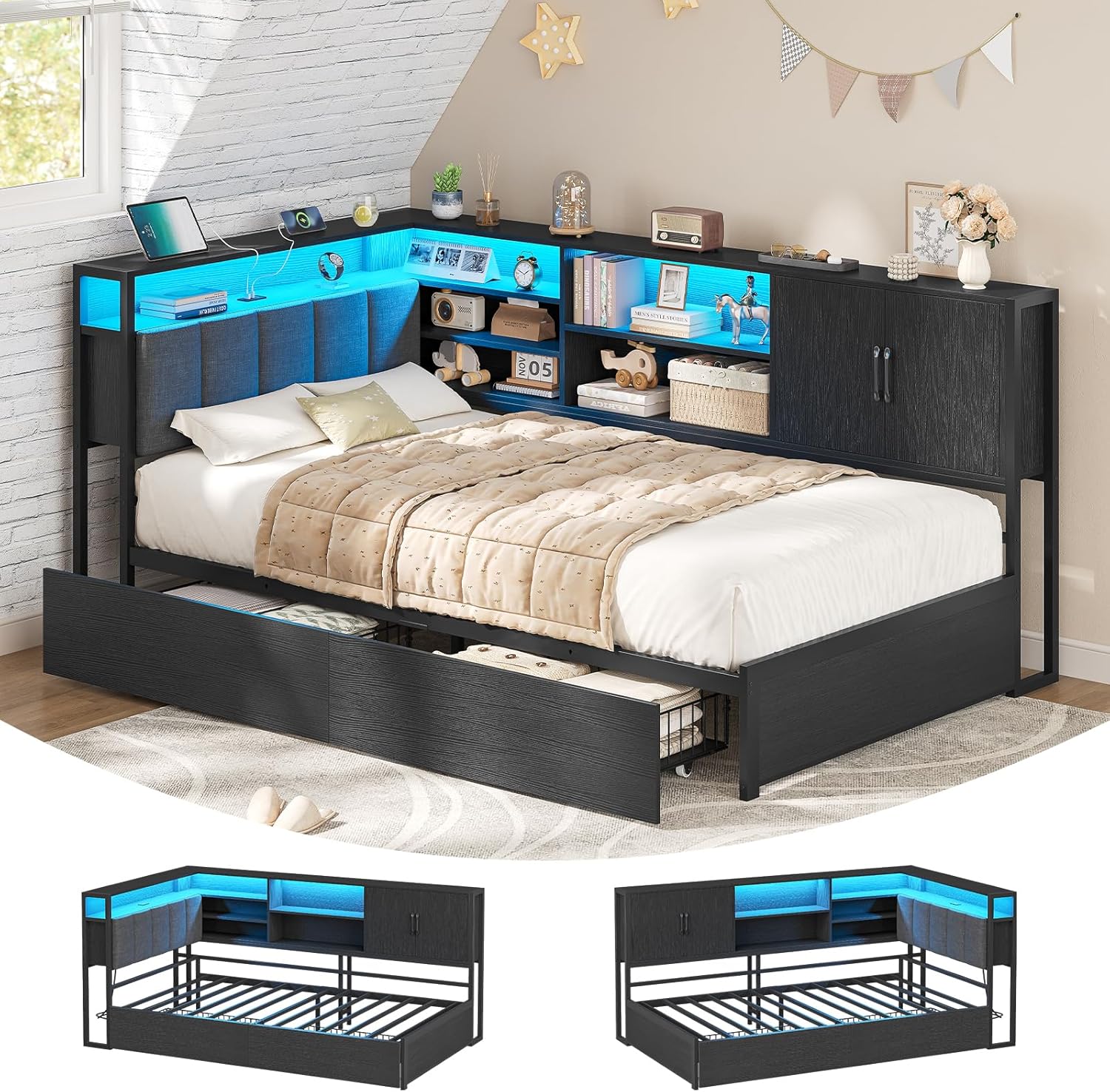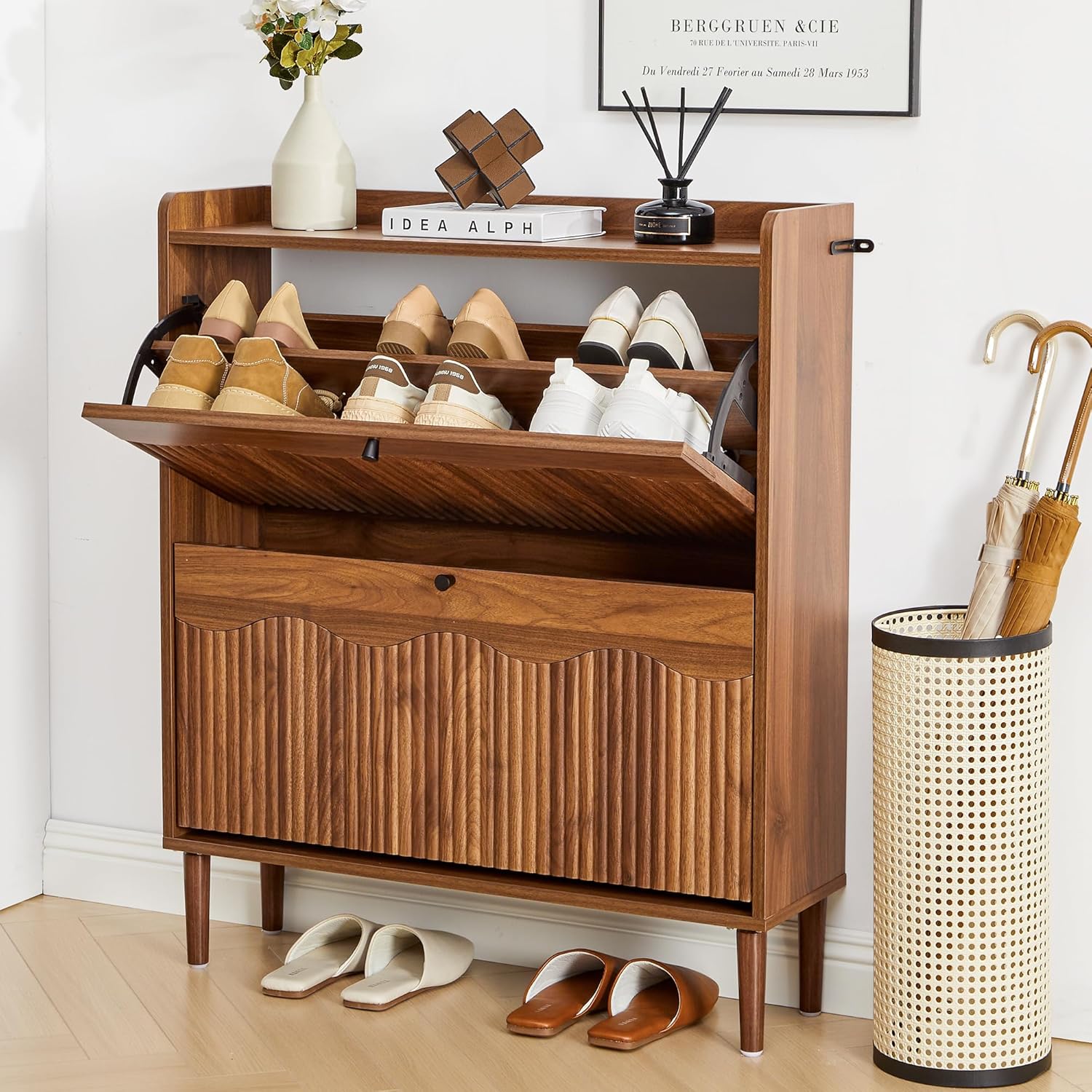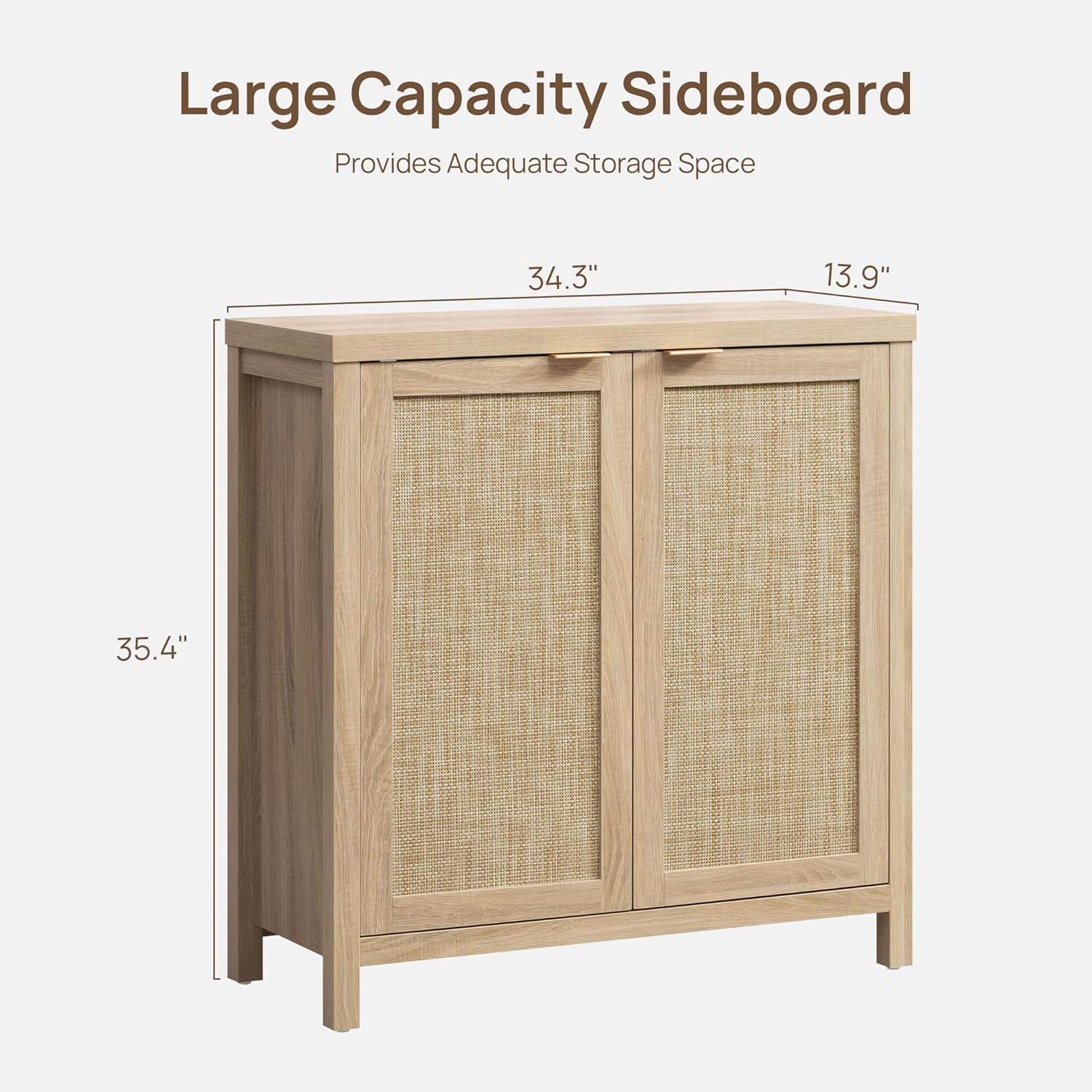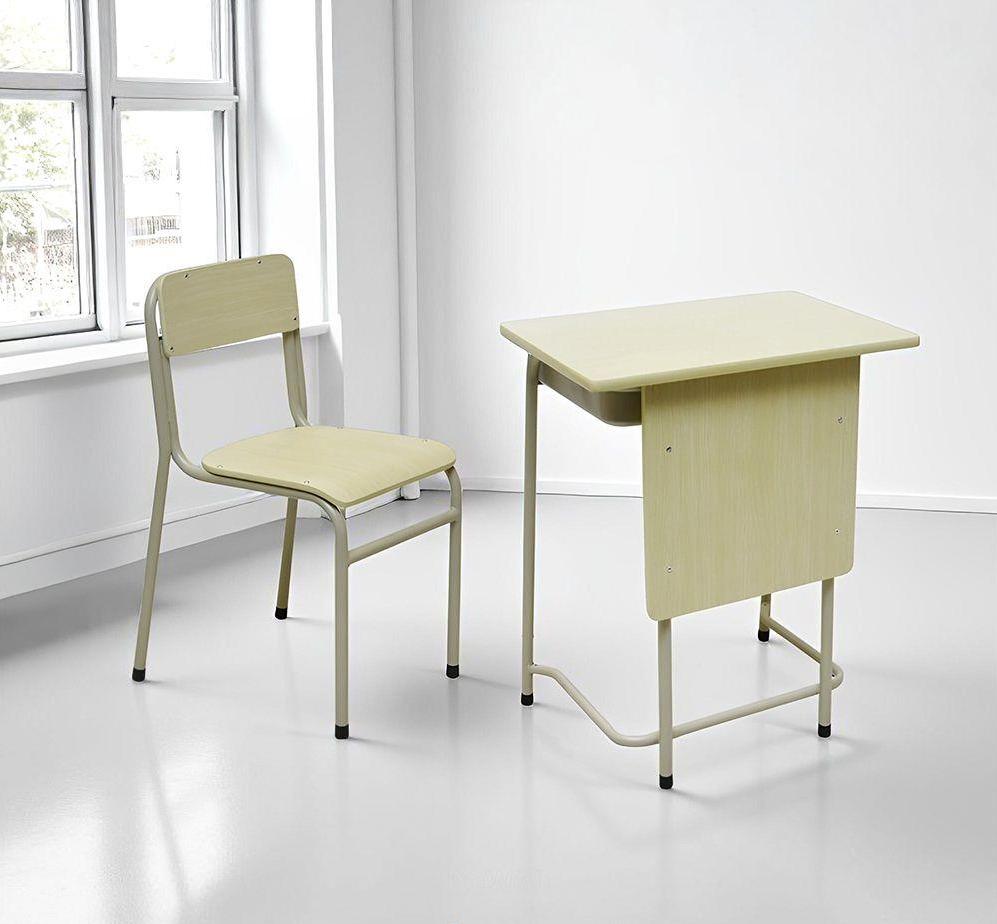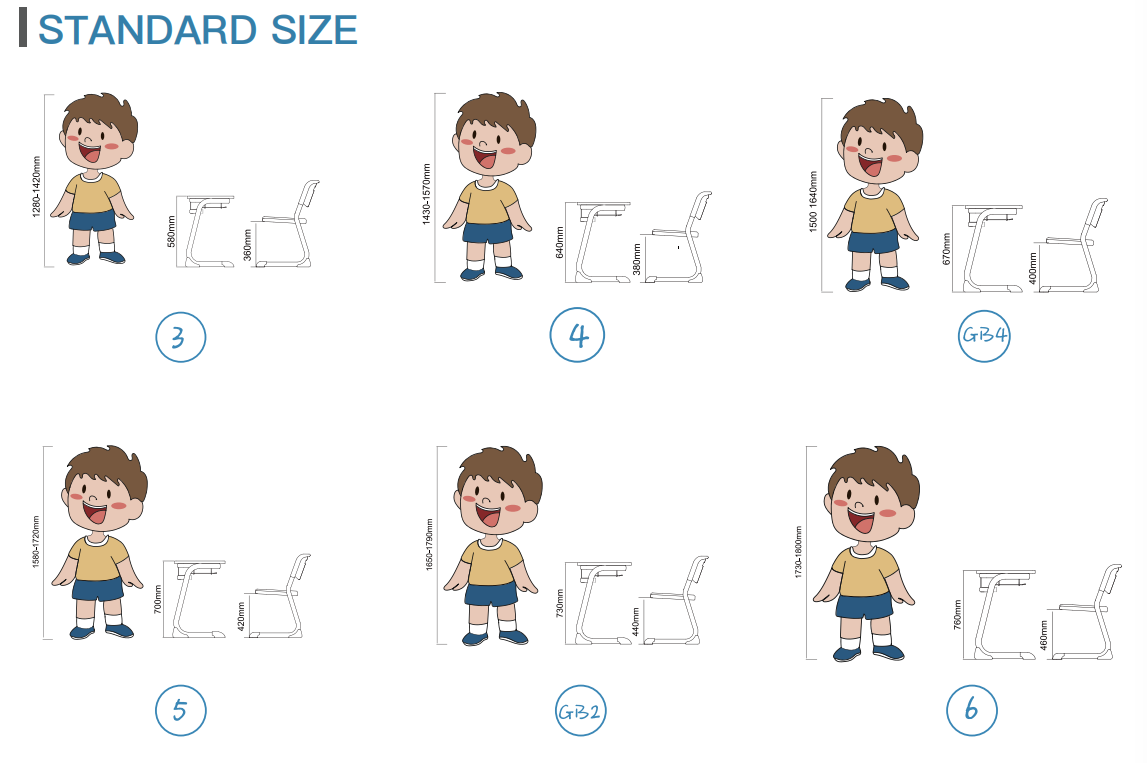
When it comes to creating a safe, comfortable, and productive learning environment, the right school furniture plays an essential role. Desks and chairs are not just tools for study—they directly affect students’ posture, concentration, and long-term health. That’s why international and national organizations have established school furniture size standards to guide schools, suppliers, and manufacturers in choosing the most suitable designs.
In this article, we will provide an overview of common school desk and chair dimensions, why they matter, and how schools can select the right furniture for different age groups.
1. Why School Furniture Standards Are Important
Ergonomics & Comfort: Proper desk and chair height reduces back strain and encourages correct sitting posture.
Health & Safety: Ill-fitted furniture can lead to musculoskeletal problems, especially for growing children.
Improved Learning Outcomes: Comfortable seating helps students focus better and reduces classroom distractions.
Uniformity for Schools: Following standards ensures consistency in classrooms and supports bulk procurement.
2. International Standards for School Furniture
Many countries follow guidelines provided by organizations such as:
ISO 5970: International standard for school furniture sizes.
EN 1729 (Europe): Specifies dimensions, safety, and ergonomics for school desks and chairs.
ANSI/BIFMA (USA): Covers furniture used in classrooms and training environments.
These standards define height codes based on student age and stature. For example, EN 1729 is widely used across Europe and divides school furniture into size marks from 0 to 7.
3. Common School Desk and Chair Size Guide
Here is a general reference for student desk and chair dimensions based on EN 1729 and ISO 5970 standards:
| Size Mark | Recommended Age (Years) | Student Height (cm) | Seat Height (cm) | Desk Height (cm) |
|---|---|---|---|---|
| 0 | 3–4 | 93–116 | 26 | 46 |
| 1 | 4–6 | 108–121 | 31 | 53 |
| 2 | 6–8 | 119–142 | 35 | 59 |
| 3 | 8–11 | 133–159 | 38 | 64 |
| 4 | 9–13 | 146–177 | 43 | 71 |
| 5 | 12–16 | 159–188 | 46 | 76 |
| 6 | 14–18 | 174–207 | 51 | 82 |
| 7 | Adult | >200 | 55 | 88 |
Note: This table may vary slightly depending on local regulations and manufacturer standards. Schools should always verify with their school furniture supplier
4. Key Considerations for Schools and Buyers
When selecting classroom desks and chairs, schools should consider:
Adjustable Options: For mixed-age classrooms, height-adjustable desks and chairs are the most flexible solution.
Durability: Steel-wood combination furniture provides both strength and long lifespan, ideal for heavy daily use.
Safety: Rounded edges, stable construction, and non-toxic coatings ensure student safety.
Storage Features: Desks with under-storage racks help students organize books and materials.
Choosing the right school furniture sizes is not just about compliance—it’s about supporting healthy growth, better posture, and a more effective learning environment. By following international standards such as EN 1729 or ISO 5970, schools and distributors can ensure that students receive furniture that meets both ergonomic and educational needs.
At Delux Furniture, we specialize in designing and manufacturing steel-wood school desks and chairs that comply with international standards while offering durability and modern style. Whether you are a wholesaler, distributor, or school, we provide customizable solutions tailored to your market.
👉 Contact us today to learn more about our school furniture collections and how we can support your projects.

